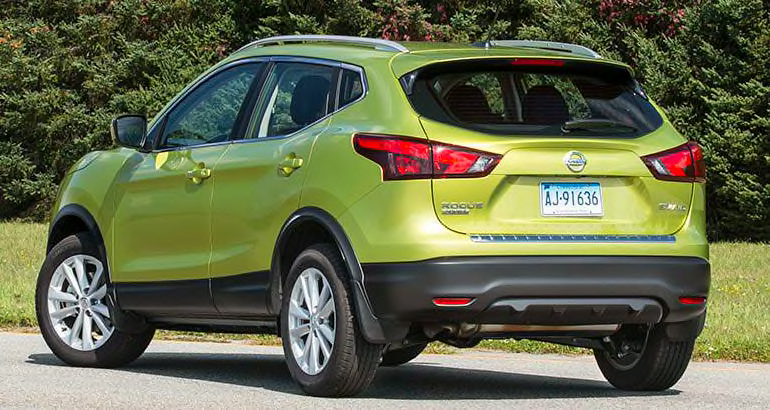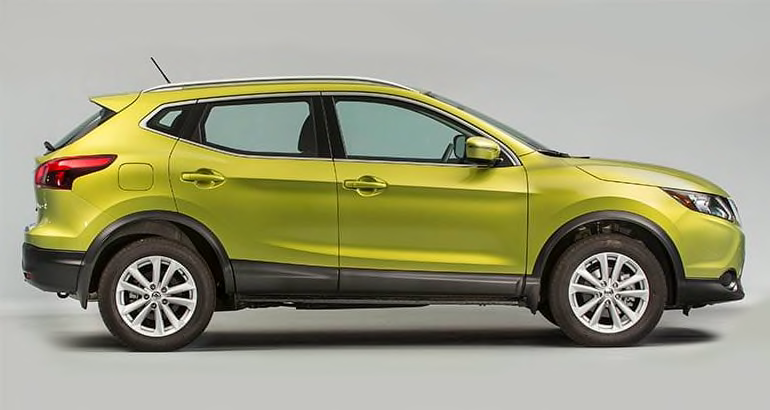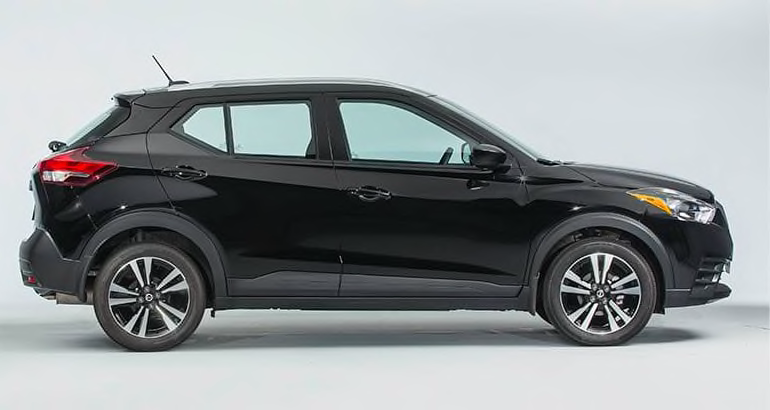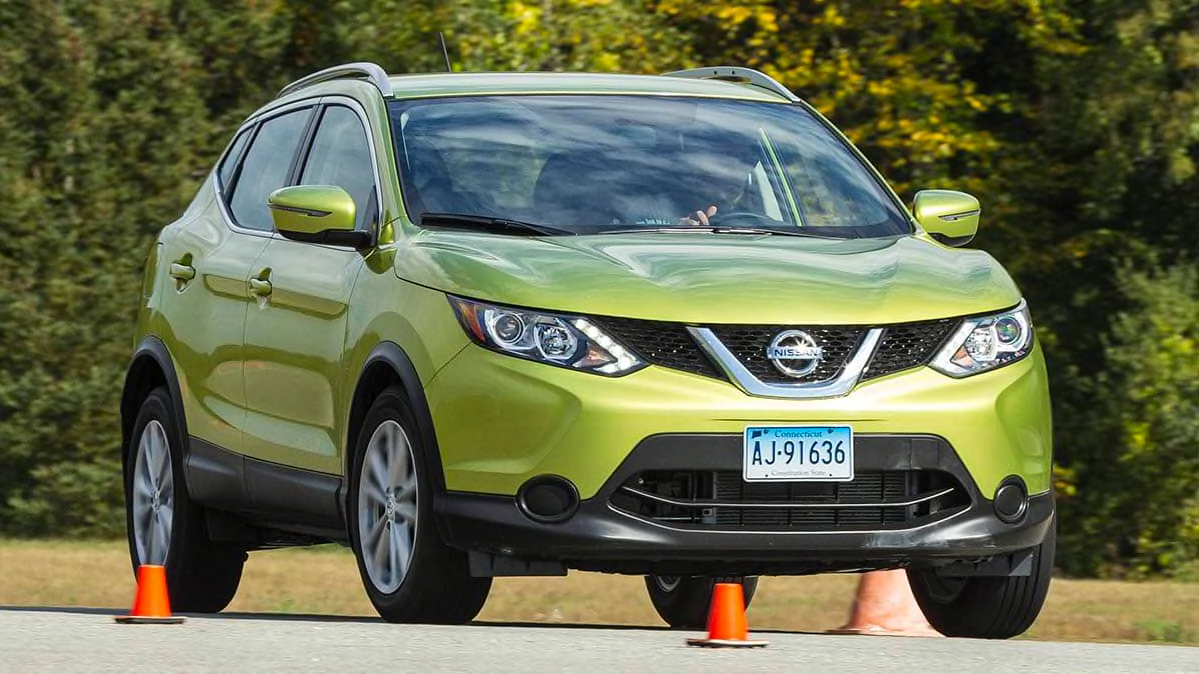
Nissan is trying to one-up the competition by offering two subcompact SUVs, the Kicks and the Rogue Sport. These showroom siblings are similar in many ways, but there are some key differences that shoppers should be aware of.
If you're considering either of these two, or something from this class, we can help. Consumer Reports tests cars, SUVs, trucks, and minivans at our test track and on public roads. We evaluate ride comfort, handling capability, seat comfort, and quietness, among our 50 tests. Our Overall Score (available to CR members) includes points if a vehicle comes with certain safety features as standard. (Learn more about the Overall Score.)
Below, we take an in-depth look at details from CR's testing to see what separates these two small Nissans from each other. And we crown a winner.
How They Drive
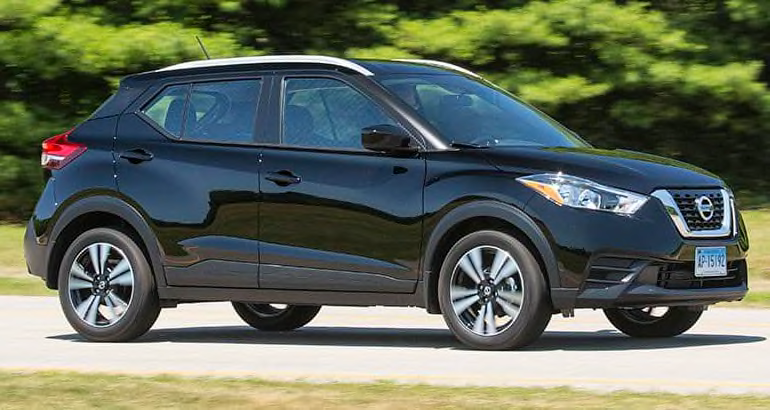
Both SUVs use a four-cylinder engine and a continuously variable transmission (CVT). The Kicks comes with a 125-hp, 1.6-liter four-cylinder, and the Rogue Sport has a 141-hp, 2.0-liter four-cylinder. They performed very similarly in our acceleration tests, and the Rogue Sport edged the Kicks by two-tenths of a second in 0-60 mph (10.3 seconds vs. 10.5). Neither SUV is particularly quick when compared with its peers.
Where the two Nissans really differ is in their fuel economy. In CR testing, the front-drive Kicks got 32 mpg overall, 24 mpg in the city, and 40 mpg on the highway. The Rogue Sport is penalized by its heavier weight, and that's partially due to its AWD system: 26 mpg overall, 19 mpg city, and 34 mpg highway. Sorry, Kicks fans, but you can't get an AWD version.
The Rogue Sport handles better than the Kicks. Though it doesn't live up to its Sporty name, it does have responsive, secure handling. The Kicks has noticeable body lean when taking corners, and its steering is imprecise.
Ride comfort is a high point for the Rogue Sport. Its composed ride and quiet cabin give it a mature and substantial feeling that most subcompact SUVs lack. The Kicks has a relatively quiet cabin, but it's plagued by a choppy ride. It's better than most competitors, but not its bigger brother.
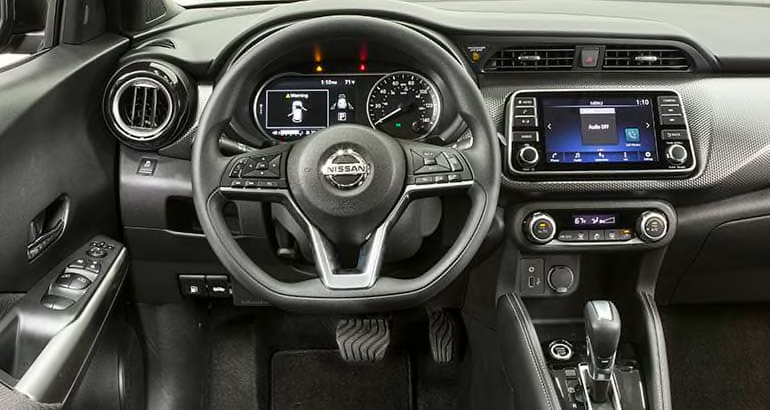
Inside the Cabin
It's easy to climb into and out of both Nissans. The door openings are wide, the bottom sills are slim, and the seats are positioned so that the driver can slide right in.
Hop between the two SUVs and it's clear that the Rogue Sport is roomier. Testers short and tall were able to find comfortable driving positions in the Rogue Sport, without having to stretch to use the controls. The Kicks is considerably narrower inside, although its headroom is as generous as that in the Sport.
The front and rear seats are similar, but not in a good way. Both SUVs have soft, squishy cloth front seats that lose support over long drives. We rented a Rogue Sport SL with the leather seats from Nissan and found that they provided much better support. But that trim starts at more than $27,000.
The rear seats were equally disappointing. They are very basic, low, and spongy, and lack thigh support, forcing passengers to sit with their knees up in the air.
We like the Kicks' large, 7-inch infotainment touch screen. It was easy to see the onscreen features, and the image from the rearview camera is big and crisp. On the other hand, though the Rogue Sport's small, 5-inch screen works fine, the image for the rearview camera and the onscreen buttons are quite small.
An automatic climate control system is standard on the midgrade level of both the Kicks and Rogue Sport; heated seats are available only on the top trims.
Kicks buyers will give up a few creature comforts. There are three storage cubbies up front, but none of them are covered; rear-seat passengers don't get cupholders, just bottle holders in the doors; and the rear seats don't lay flat with the cargo floor when folded. Our tested Rogue Sport SV's two-level cargo floor lets some items be stored out of the way underneath the hard panel.
A temporary spare tire is standard on both SUVs, which is nice.
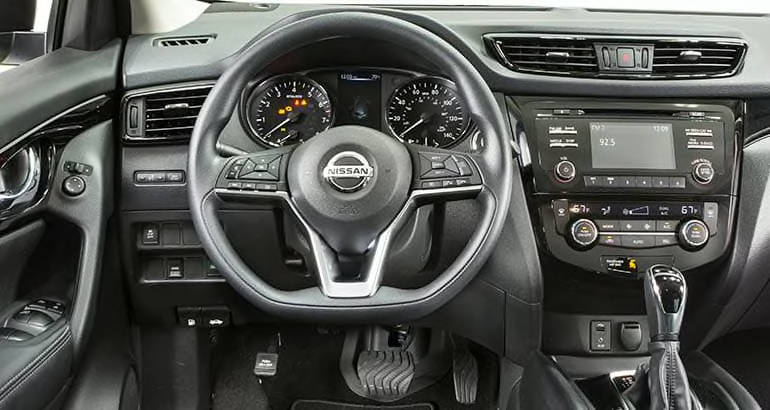
Safety
Both the Kicks and Rogue Sport get standard forward-collision warning and automatic emergency braking, which we applaud. The Sport also has standard blind-spot warning and rear cross-traffic warning; these two features are optional on the base Kicks and standard on the other two trims. In addition, Nissan's ProPilot Assist advanced driver assistance system will be optional on the Rogue Sport.
Which One Should You Get?
Bottom line: The Rogue Sport really is the better overall package. It's more refined and roomier, and it gets pretty good fuel economy for an all-wheel-drive SUV. Plus, that available all-wheel drive will give drivers more security when it snows.
The Kicks should appeal to those shoppers who are drawn to subcompact SUVs but who don't need AWD (think warm-weather states). For a lower sticker price than most SUVs—and several thousand dollars less than the Rogue Sport—it offers similar space and excellent fuel economy.
Because it blurs car genres, the Kicks is a solid alternative to a compact or subcompact car—such as Nissan's own Sentra, which we've found to be mediocre. Compared with the Rogue Sport, the Kicks' better fuel economy means buyers will save about $260 per year in gas costs. Buyers in the Snow Belt should invest in some winter/snow tires or in the new all-weather tires that we have recently tested.
